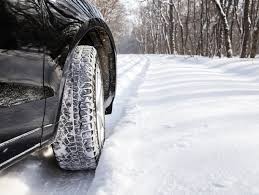10 Driving Laws in Canada That Might Surprise You

-
Navigating Canadian Roads: Driving Laws That Might Surprise Newcomers
- 1. Mandatory Winter Tires (in Quebec, Recommended Elsewhere)
- 2. Right Turn on Red (with Exceptions)
- 3. "Move Over" Law for Emergency Vehicles
- 4. Headlights On in Inclement Weather
- 5. Passing School Buses with Flashing Lights
- 6. Distracted Driving Laws (Strict)
- 7. Pedestrian Right-of-Way
- 8. "U-Turns" are Often Restricted
- 9. Child Car Seat Laws (Age/Weight/Height Specific)
- 10. Impaired Driving (Zero Tolerance for New Drivers)
- Conclusion: Drive Safely and Legally in Canada
Driving in Canada can be a liberating experience, but for newcomers, the rules of the road might differ significantly from their home countries. Beyond the obvious (like driving on the right side of the road), there are many subtle—and sometimes surprising—laws and customs that can catch new drivers off guard. Understanding these nuances is crucial for road safety, avoiding fines, and ensuring a smooth driving experience. This guide highlights 10 driving laws in Canada that might surprise you.
1. Mandatory Winter Tires (in Quebec, Recommended Elsewhere)
The Law: In Quebec, winter tires are mandatory from December 1st to March 15th. Failure to comply results in a fine. While not legally required in other provinces, they are highly recommended for safety due to snow and ice.
Why it Matters: Winter tires provide superior grip and braking performance in cold weather, even on dry pavement, significantly reducing accident risk.
2. Right Turn on Red (with Exceptions)
The Law: In most of Canada (except Montreal Island and some specific intersections), you can turn right on a red light after coming to a complete stop, unless a sign explicitly prohibits it. In Montreal, right turns on red are generally prohibited.
Why it Matters: Knowing this rule can improve traffic flow, but always ensure the intersection is clear and safe before proceeding.
 A Guide to Accessing Free or Low-Cost Legal Aid in Canada
A Guide to Accessing Free or Low-Cost Legal Aid in Canada3. "Move Over" Law for Emergency Vehicles
The Law: When approaching a stopped emergency vehicle (police, ambulance, fire truck) with flashing lights, or a tow truck or road-side assistance vehicle, you must slow down and, if safe to do so, move to a farther lane. Fines are substantial.
Why it Matters: This law protects emergency personnel and roadside workers who are vulnerable on the side of the road.
4. Headlights On in Inclement Weather
The Law: In most provinces, it's legally required to turn on your headlights (not just daytime running lights) when visibility is reduced due to fog, rain, snow, or at dusk/dawn. Some provinces require headlights to be on at all times.
Why it Matters: Ensures you can see the road and, more importantly, that other drivers can see your vehicle.
5. Passing School Buses with Flashing Lights
The Law: When a school bus has its red lights flashing and its stop arm extended, you must stop, regardless of which direction you are travelling in (unless there's a median separating the lanes). This applies to both sides of the road. Fines are very high.
 Beyond the Bar: 10 Creative Ways to Make Friends in a New Canadian City
Beyond the Bar: 10 Creative Ways to Make Friends in a New Canadian CityWhy it Matters: This law protects children getting on and off the bus.
6. Distracted Driving Laws (Strict)
The Law: Using a handheld communication device (cell phone) while driving is illegal across Canada. This includes texting, talking, or even holding the device. Penalties are severe, including large fines and demerit points.
Why it Matters: Distracted driving is a major cause of accidents. Focus on the road.
7. Pedestrian Right-of-Way
The Law: Pedestrians generally have the right-of-way at marked crosswalks and intersections. Drivers must yield to pedestrians. In some provinces, drivers must stop for pedestrians waiting to cross at a crosswalk.
Why it Matters: Pedestrian safety is paramount. Always be alert for pedestrians, especially in urban areas.
 Jury Duty in Canada: What It Is and What to Do if You're Summoned
Jury Duty in Canada: What It Is and What to Do if You're Summoned8. "U-Turns" are Often Restricted
The Law: U-turns are generally prohibited at intersections controlled by traffic lights, on curves, near the crest of a hill, or where signs prohibit them. Always check for signs.
Why it Matters: U-turns can be dangerous and disrupt traffic flow if not done safely and legally.
9. Child Car Seat Laws (Age/Weight/Height Specific)
The Law: Canada has strict laws regarding child car seats, based on the child's age, weight, and height, not just age. Children must be in appropriate car seats or booster seats until they meet specific criteria.
Why it Matters: Ensures the safety of children in vehicles. Fines are significant for non-compliance.
10. Impaired Driving (Zero Tolerance for New Drivers)
The Law: Canada has very strict impaired driving laws. For new drivers (those in graduated licensing programs), there is often a zero-tolerance policy for alcohol and drugs in their system.
 Can Permanent Residents Vote in Canadian Elections? The Definitive Answer
Can Permanent Residents Vote in Canadian Elections? The Definitive AnswerWhy it Matters: Impaired driving is a serious criminal offense with severe penalties, including fines, license suspension, and jail time.
Conclusion: Drive Safely and Legally in Canada
Understanding Canada's driving laws is essential for your safety and legal compliance. While some rules may differ from what you're used to, they are designed to ensure the well-being of all road users. Take the time to familiarize yourself with the specific regulations of your province, drive defensively, and always prioritize safety. A knowledgeable driver is a safe driver.
